
An electrical insulator is a material in which electric current does not flow freely. The atoms of the insulator have tightly bound electrons which cannot readily move. Other materials—semiconductors and conductors—conduct electric current more easily. The property that distinguishes an insulator is its resistivity; insulators have higher resistivity than semiconductors or conductors. The most common examples are non-metals.
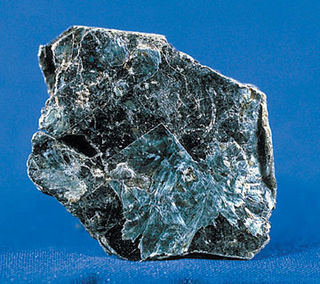
Vermiculite is a hydrous phyllosilicate mineral which undergoes significant expansion when heated. Exfoliation occurs when the mineral is heated sufficiently; commercial furnaces can routinely produce this effect. Vermiculite forms by the weathering or hydrothermal alteration of biotite or phlogopite. Large commercial vermiculite mines exist in the United States, Russia, South Africa, China, and Brazil.

Medium-density fibreboard (MDF) is an engineered wood product made by breaking down hardwood or softwood residuals into wood fibre, often in a defibrator, combining it with wax and a resin binder, and forming it into panels by applying high temperature and pressure. MDF is generally denser than plywood. It is made up of separated fibre but can be used as a building material similar in application to plywood. It is stronger and denser than particle board.

Mesothelioma is a type of cancer that develops from the thin layer of tissue that covers many of the internal organs. The area most commonly affected is the lining of the lungs and chest wall. Less commonly the lining of the abdomen and rarely the sac surrounding the heart, or the sac surrounding the testis may be affected. Signs and symptoms of mesothelioma may include shortness of breath due to fluid around the lung, a swollen abdomen, chest wall pain, cough, feeling tired, and weight loss. These symptoms typically come on slowly.

Chrysotile or white asbestos is the most commonly encountered form of asbestos, accounting for approximately 95% of the asbestos in the United States and a similar proportion in other countries. It is a soft, fibrous silicate mineral in the serpentine subgroup of phyllosilicates; as such, it is distinct from other asbestiform minerals in the amphibole group. Its idealized chemical formula is Mg3(Si2O5)(OH)4. The material has physical properties which make it desirable for inclusion in building materials, but poses serious health risks when dispersed into air and inhaled.
The mineral asbestos is subject to a wide range of laws and regulations that relate to its production and use, including mining, manufacturing, use and disposal. Injuries attributed to asbestos have resulted in both workers' compensation claims and injury litigation. Health problems attributed to asbestos include asbestosis, mesothelioma, lung cancer, and diffuse pleural thickening.

Transite originated as a brand that Johns Manville, an American company, created in 1929 for a line of asbestos-cement products, including boards and pipes. In time it became a generic term for other companies' similar asbestos-cement products, and later an even more generic term for a hard, fireproof composite material, fibre cement boards, typically used in wall construction. It can also be found in insulation, siding, roof gutters, and cement wallboard. The more prevalent transite found in wall construction and roofing tiles for example, will last anywhere from 50 years to over 100 years.

Asbestos cement, genericized as fibro, fibrolite, or AC sheet, is a composite building material consisting of cement and asbestos fibres pressed into thin rigid sheets and other shapes.

Fiber cement siding is a building material used to cover the exterior of a building in both commercial and domestic applications. Fiber cement is a composite material made of cement reinforced with cellulose fibers. Originally, asbestos was used as the reinforcing material but, due to safety concerns, that was replaced by cellulose in the 1980s. Fiber cement board may come pre-painted or pre-stained or can be done so after its installation.

Fireproofing is rendering something resistant to fire, or incombustible; or material for use in making anything fire-proof. It is a passive fire protection measure. "Fireproof" or "fireproofing" can be used as a noun, verb or adjective; it may be hyphenated ("fire-proof").
Fiber-reinforced concrete or fibre-reinforced concrete (FRC) is concrete containing fibrous material which increases its structural integrity. It contains short discrete fibers that are uniformly distributed and randomly oriented. Fibers include steel fibers, glass fibers, synthetic fibers and natural fibers – each of which lend varying properties to the concrete. In addition, the character of fiber-reinforced concrete changes with varying concretes, fiber materials, geometries, distribution, orientation, and densities.
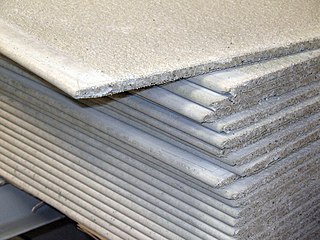
A cement board is a combination of cement and reinforcing fibers formed into sheets, of varying thickness that are typically used as a tile backing board. Cement board can be nailed or screwed to wood or steel studs to create a substrate for vertical tile and attached horizontally to plywood for tile floors, kitchen counters and backsplashes. It can be used on the exterior of buildings as a base for exterior plaster (stucco) systems and sometimes as the finish system itself.

Building insulation materials are the building materials that form the thermal envelope of a building or otherwise reduce heat transfer.
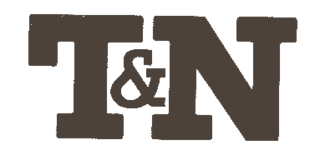
Turner & Newall was a manufacturing business based in Manchester, United Kingdom. At its peak, it was a constituent of the FT 30 index of leading companies on the London Stock Exchange. As part of their business, the company was one of the first to industrialise asbestos, and its eventual demise in 2001 left an aftermath of asbestos litigation.

Asbestos is a naturally occurring fibrous silicate mineral. There are six types, all of which are composed of long and thin fibrous crystals, each fibre being composed of many microscopic "fibrils" that can be released into the atmosphere by abrasion and other processes. Inhalation of asbestos fibres can lead to various dangerous lung conditions, including mesothelioma, asbestosis, and lung cancer. As a result of these health effects, asbestos is considered a serious health and safety hazard.
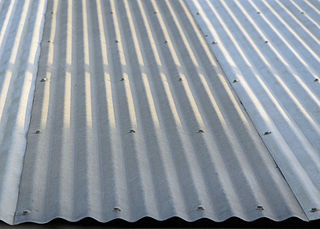
Fibre cement is a composite building and construction material, used mainly in roofing and facade products because of its strength and durability. One common use is in fiber cement siding on buildings.
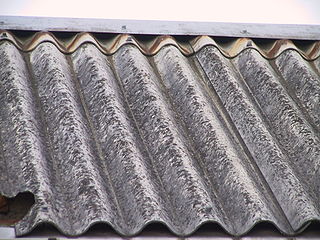
Eternit is a registered trademark for a brand of fibre cement currently owned by the Belgian company Etex. Fibre is often applied in building and construction materials, mainly in roofing and facade products.

The Control of Asbestos Regulations 2006 came into force in the United Kingdom on 13 November 2006 and brought together a number of other asbestos related pieces of legislation. This has been superseded by The Control of Asbestos Regulations 2012. The pieces of legislation the regulations revoked and replaced were the 'Control of Asbestos at Work Regulations 2002', the 'Asbestos (Licensing) Regulations 1983' and the 'Asbestos (Prohibitions) Regulations 1992'. Key elements of the regulations include a greater emphasis on training requiring anyone who may come into contact with Asbestos in the course of their work to be given suitable training. Greater restrictions were also placed on the amount of exposure workers could be exposed to in the form of 'control limits'. The recently published 'Asbestos: The survey guide' (HSG264) is complementary to these regulations. When work with asbestos is being carried out the Regulations place a requirement on employers and self-employed workers to prevent exposure to asbestos fibres.

Asbestos-related diseases are disorders of the lung and pleura caused by the inhalation of asbestos fibres. Asbestos-related diseases include non-malignant disorders such as asbestosis, diffuse pleural thickening, pleural plaques, pleural effusion, rounded atelectasis and malignancies such as lung cancer and malignant mesothelioma.

All types of asbestos fibers are known to cause serious health hazards in humans. The most common diseases associated with chronic exposure to asbestos are asbestosis and mesothelioma.

















